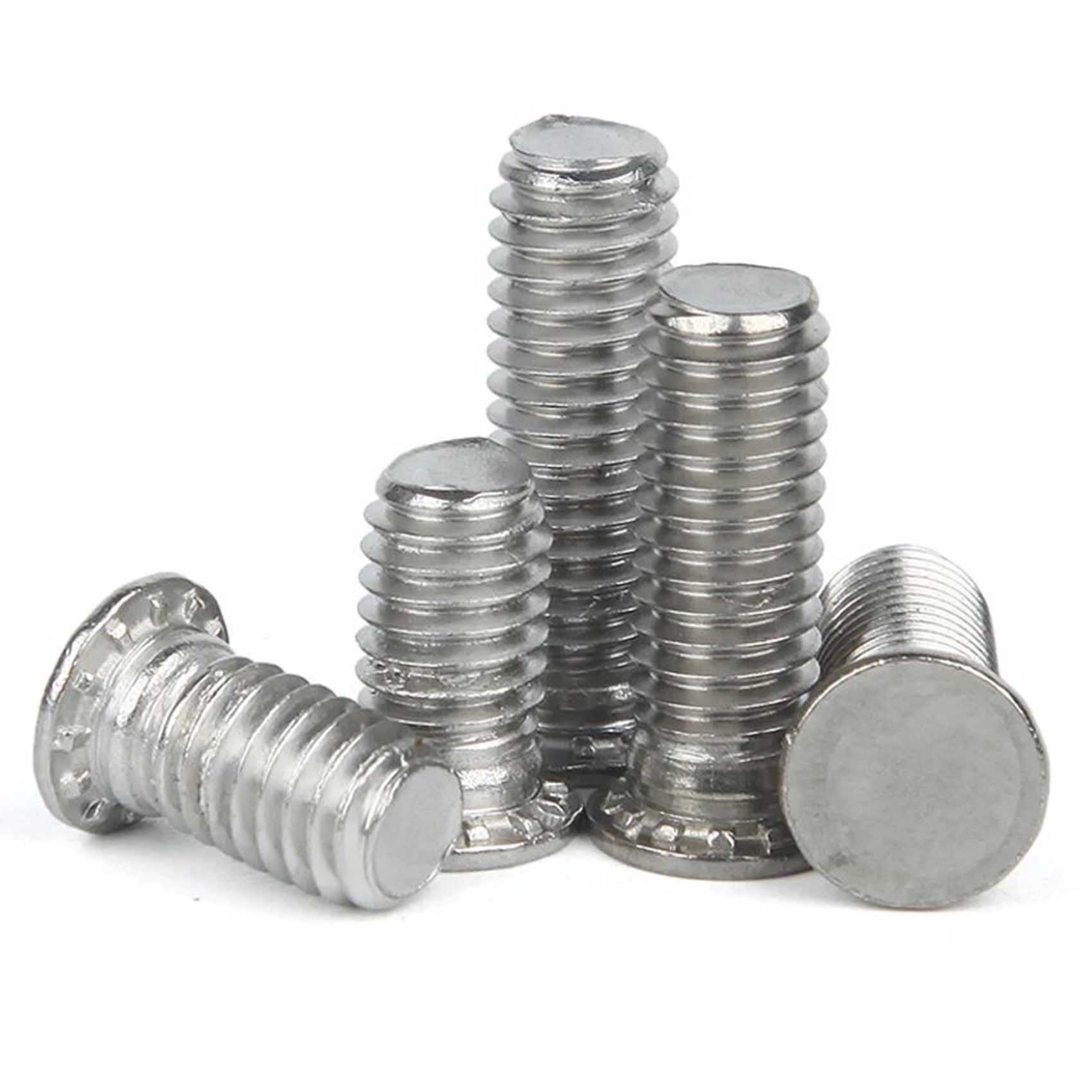Stainless steel (SS) and mild steel (MS) clinch studs are specialized fasteners used in sheet metal assemblies, particularly in industries like automotive, electronics, and manufacturing. Here are the typical details associated with these fasteners:
Material:
- Stainless Steel: Stainless steel clinch studs are made from corrosion-resistant alloys like SS304 or SS316. This ensures excellent durability and resistance to rust and corrosion, making them suitable for applications in harsh environments or where hygiene is important.
- Mild Steel: Mild steel clinch studs are manufactured from low-carbon steel. While not as corrosion-resistant as stainless steel, they offer strength and cost-effectiveness, making them suitable for various industrial applications.
Head Type:
- Clinch studs typically feature a cylindrical shaft with a head on one end. The head may be flat, countersunk, or another suitable shape depending on the application requirements.
Thread Type:
- Clinch studs often have external threads along a portion of their length, allowing them to be securely fastened into a pre-drilled or punched hole in the sheet metal. The threads may be coarse or fine depending on the specific application.
Clinching Feature:
- Clinch studs are designed with a clinching feature, which involves deforming or pressing a portion of the stud into the sheet metal during installation. This creates a secure, permanent attachment without the need for additional fasteners such as nuts or bolts. The clinching process typically involves applying pressure to the stud using a press or similar equipment.
Size Range:
- Clinch studs are available in various sizes to accommodate different sheet metal thicknesses and applications. Common diameters range from small sizes, such as #4 or M3, to larger sizes suitable for heavy-duty applications.
Application:
- Clinch studs are used in sheet metal assemblies where a strong, permanent fastening solution is required. They are commonly used in applications such as automotive body panels, electrical enclosures, appliances, and electronic devices. Clinch studs provide a reliable alternative to welding or traditional fastening methods and are particularly useful in situations where access to both sides of the sheet metal is limited.
Installation:
- Installing clinch studs typically involves inserting the stud into a pre-drilled or punched hole in the sheet metal and applying pressure to the head of the stud using a press or similar equipment. The pressure deforms the clinching feature of the stud, securing it firmly in place. The process is fast and efficient, allowing for high-volume production in manufacturing environments.
